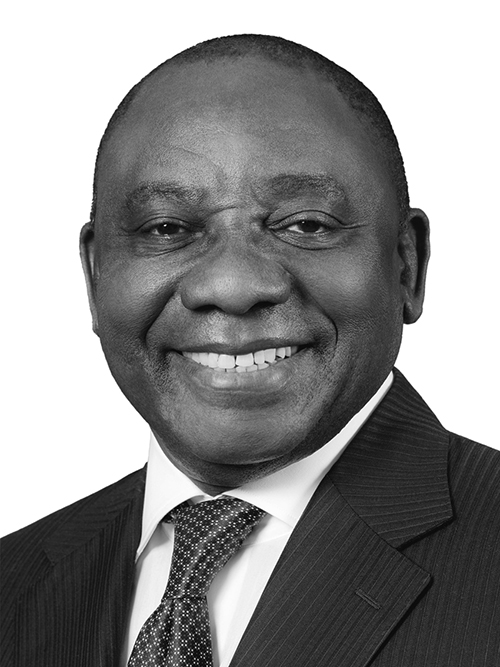Remarks by President Cyril Ramaphosa at the 2nd South African Green Hydrogen Summit

Programme Director,
Minister Kgosientsho Ramokgopa,
Distinguished Guests,
Ladies and Gentlemen,
It gives me great pleasure to address this second South African Green Hydrogen Summit. I am sorry that I am unable to be there in person.
This is an extremely important summit for our country.
South Africa aims to position itself as a globally competitive player in this dynamic and growing industry.
The South Africa Investment Strategy approved by Cabinet earlier this year lists green hydrogen as one of the big frontier strategic sectors expected to attract foreign and domestic direct investment.
The hydrogen economy has a prominent role to play in our country’s just energy transition, providing employment and support to vulnerable workers, communities and small businesses.
It has been estimated that the hydrogen economy has the potential to add 3.6 percent to our GDP by 2050 and approximately 370,000 jobs.
We must act with purpose to harness the potential of the green hydrogen economy.
Some 64 countries accounting for 89 per cent of global emissions have announced net zero targets by 2050.
It is anticipated that global green hydrogen demand will increase sevenfold by 2050.
For the world to limit global warming to less than 1.5 degrees, green hydrogen will need to constitute 10 to 20 per cent of the global energy mix.
South Africa has committed to ambitious emission reduction targets. Our own estimates indicate that green hydrogen has the potential to remove 10 to 15 percent of our domestic emissions and contribute to our nation’s long-term energy security.
The inaugural South Africa Green Hydrogen Summit last year focused on scaling up regional cooperation around green hydrogen.
This is being done through the African Green Hydrogen Alliance, which includes Egypt, Kenya, Mauritania, Morocco, Namibia, Ethiopia, Angola and South Africa.
The alliance aims to harness Africa’s potential in developing green hydrogen industries. It aims to make joint calls for technical support, funding and market access to international public and private sector partners.
The inaugural summit laid a strong policy foundation. This year’s summit has a dedicated project focus, providing an opportunity to demonstrate the degree to which projects have matured and advanced.
This is also an opportunity to demonstrate technological developments and advancements in the green hydrogen space.
Close cooperation between public, private and financial partners will be key to unlocking Africa’s green hydrogen potential.
This will enable mass-scale domestic and international demand for green hydrogen and increase cooperation on green hydrogen production, storage and distribution infrastructure.
If investment is significantly scaled-up, green hydrogen can deliver the equivalent of more than one third of Africa’s current energy consumption, increase our collective GDP, improve our clean water supply and empower our communities.
Proper planning, regulation and incentive schemes are critical to mobilise private sector investment.
South Africa has deep capital markets with world-class conditions for generating renewable energy through solar and wind power, which are key drivers of the production of green hydrogen.
Funding green hydrogen projects will require innovative financing structures sourced from multiple stakeholders.
In June 2023, South Africa concluded a Heads of Agreement with the intention to launch the SA-H2 Fund. This is an innovative blended finance fund that will facilitate the development of a green hydrogen sector and circular economy in South Africa.
SA-H2 aims to secure $1 billion in funding raised directly in South Africa or via indirect channels. The Fund is a partnership of private and public enterprises, locally and globally.
Since the last Summit, we have made advances towards building the green hydrogen industry in the country.
These include a Joint Declaration of Intent with the German government focusing on market access, off-take opportunities and value-additive benefits in the production of green steel and green fertiliser.
South Africa has also signed an MOU with the Netherlands as an off-taker for green hydrogen derivative products.
It is encouraging to note that a Memorandum of Cooperation will be signed at this conference by three multinationals in the green hydrogen mobility space, namely Sasol, Anglo American and BMW.
Sasol will serve as a supplier to Anglo and BMW as part of their focus on commercial and passenger fleet transformation. These are important initiatives within the context of carbon border adjustment mechanisms.
As I conclude, allow me to thank all the partners and sponsors that have made this summit possible. A special mention should go to Anglo American, BMW, Sasol, the IDC and GIZ.
I wish business and government delegations at this summit well as we work to shape Africa’s green hydrogen agenda for the benefit of our economies and societies, now and into the future.
I thank you.




